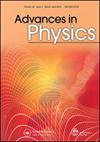Relaxing with relaxors: a review of relaxor ferroelectrics
IF 13.8
1区 物理与天体物理
Q1 PHYSICS, CONDENSED MATTER
引用次数: 342
Abstract
Relaxor ferroelectrics were discovered in the 1950s but many of their properties are not understood. In this review, we shall concentrate on materials such as PMN (PbMg1/3Nb2/3O3), which crystallize in the cubic perovskite structure but with the Mg ion, charge 2+, and the Nb ion, charge 5+, randomly distributed over the B site of the perovskite structure. The peak of the dielectric susceptibility for relaxors is much broader in temperature than that of conventional ferroelectrics, while below the maximum of the susceptibility most relaxors remain cubic and show no electric polarization, unlike that observed for conventional ferroelectrics. Because of the large width of the susceptibility, relaxors are often used as capacitors. Recently, there have been many X-ray and neutron scattering studies of relaxors and the results have enabled a more detailed picture to be obtained. An important conclusion is that relaxors can exist in a random field state, as initially proposed by Westphal, Kleemann and Glinchuk, similar to that which has been studied for diluted antiferromagnets. If a relaxor is cooled from a high temperature, then the Burns temperature is a measure of when slow fluctuations become evident. These fluctuations are connected with the disorder and are known as nano-domains. The Burns temperature is not a well-defined transition temperature. At a lower temperature, there is a well-defined boundary to a so-called random field state when the nano-domains become static but there is no long-range periodic order. This phase may have both history-dependent properties and a skin effect in which the surface of the sample is different from that of the bulk material, as also found in experiments on magnetic systems. Section 1 is an introduction to the review, to ferroelectricity and to relaxors. Section 2 gives a description of the results obtained by dielectric, optical, specific heat and other macroscopic properties. These long-wavelength properties give a variety of different characteristic temperatures and do not directly probe the random field state. In Section 3, we describe the results of neutron and X-ray scattering and show that they strongly support the interpretation that relaxors have a random field state. In Section 4, we briefly describe the results for other relaxor systems such as (PMN)1−x (PT) x for which PMN is mixed with different amounts of the ferroelectric lead titanate (PT), and we show that the existence of a random field state enables us also to describe the experimental results for these mixed materials. We hope that this review will inspire further theoretical and experimental work to understand the nature of the random field states and to compare the experimental results more satisfactorily with theory.用弛豫剂松弛:弛豫铁电体综述
弛豫铁电体是在20世纪50年代发现的,但它们的许多性质尚不清楚。在这篇综述中,我们将集中讨论PMN (pbm1 / 3nb2 / 3o3)等材料,它们在立方钙钛矿结构中结晶,但带2+电荷的Mg离子和带5+电荷的Nb离子随机分布在钙钛矿结构的B位上。弛豫量的介电磁化率峰值在温度下比常规铁电体宽得多,而在最大磁化率下,大多数弛豫量保持立方,不表现出电极化,这与常规铁电体不同。由于电导率的宽度很大,所以经常使用弛豫器作为电容器。最近,人们对弛豫剂进行了许多x射线和中子散射研究,结果使人们能够获得更详细的图像。一个重要的结论是松弛子可以存在于随机场状态,正如Westphal, Kleemann和Glinchuk最初提出的那样,类似于稀释反铁磁体的研究。如果松弛剂从高温中冷却下来,那么伯恩斯温度是衡量缓慢波动何时变得明显的一个指标。这些波动与无序有关,被称为纳米畴。伯恩斯温度不是一个定义明确的转变温度。在较低的温度下,当纳米畴变成静态时,有一个明确的边界到所谓的随机场状态,但没有长期的周期性秩序。该相可能具有历史依赖性质和集肤效应,其中样品的表面与大块材料的表面不同,这也在磁性系统的实验中发现。第一部分是对评述、铁电性和弛豫的介绍。第2节描述了通过电介质、光学、比热和其他宏观性质得到的结果。这些长波特性给出了各种不同的特征温度,并且不直接探测随机场状态。在第3节中,我们描述了中子和x射线散射的结果,并表明它们有力地支持了松弛子具有随机场态的解释。在第4节中,我们简要描述了其他弛豫系统的结果,如(PMN)1−x (PT) x,其中PMN与不同量的铁电钛酸铅(PT)混合,并且我们表明随电场态的存在使我们也能够描述这些混合材料的实验结果。我们希望这篇综述将启发进一步的理论和实验工作,以了解随机场状态的性质,并将实验结果与理论更令人满意地进行比较。
本文章由计算机程序翻译,如有差异,请以英文原文为准。
求助全文
约1分钟内获得全文
求助全文
来源期刊

Advances in Physics
物理-物理:凝聚态物理
CiteScore
67.60
自引率
0.00%
发文量
1
期刊介绍:
Advances in Physics publishes authoritative critical reviews by experts on topics of interest and importance to condensed matter physicists. It is intended for motivated readers with a basic knowledge of the journal’s field and aims to draw out the salient points of a reviewed subject from the perspective of the author. The journal''s scope includes condensed matter physics and statistical mechanics: broadly defined to include the overlap with quantum information, cold atoms, soft matter physics and biophysics. Readership: Physicists, materials scientists and physical chemists in universities, industry and research institutes.
 求助内容:
求助内容: 应助结果提醒方式:
应助结果提醒方式:


